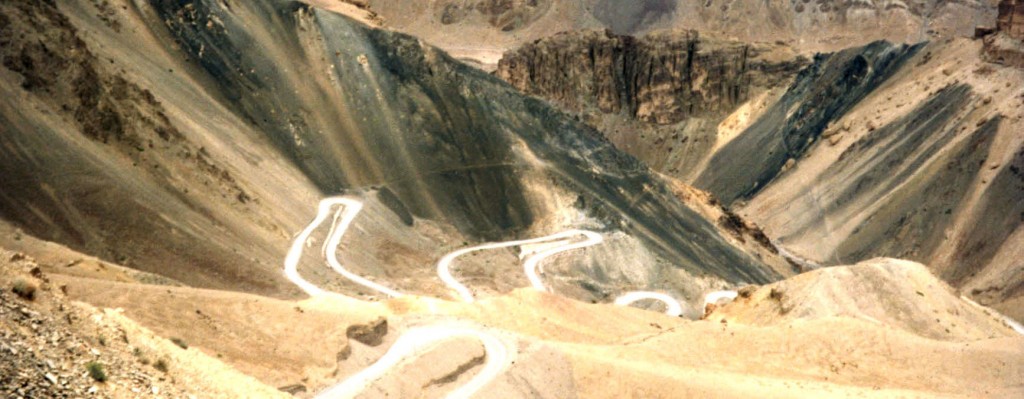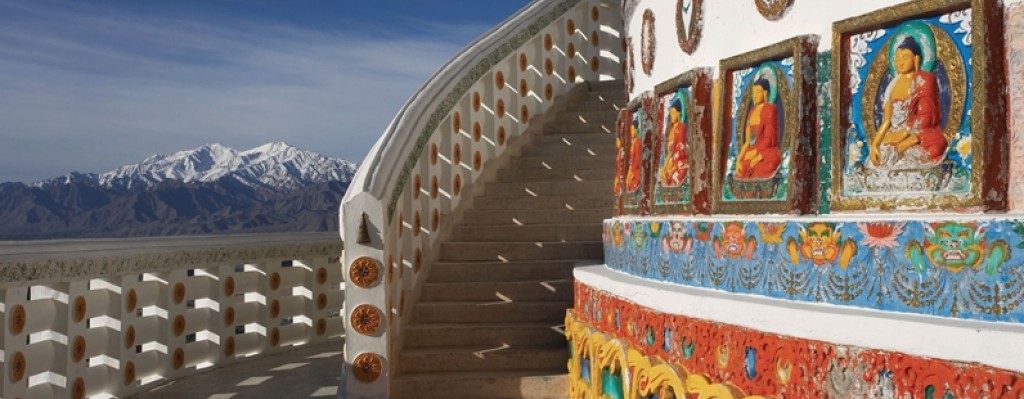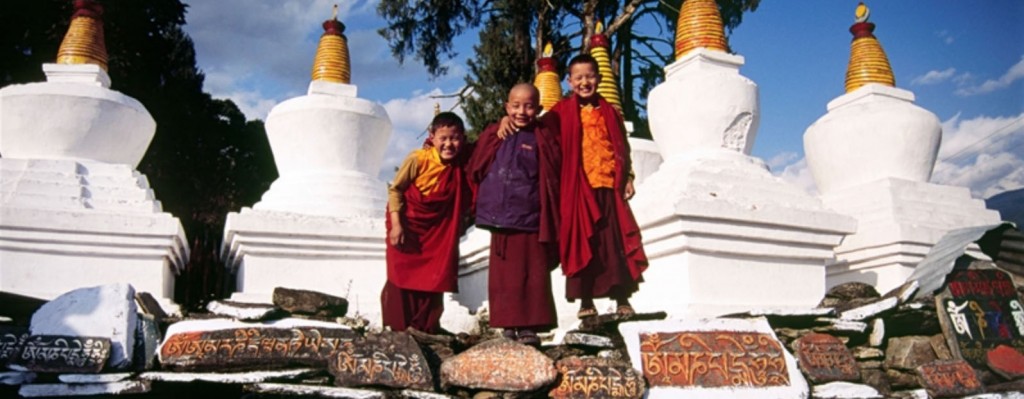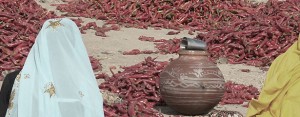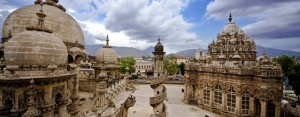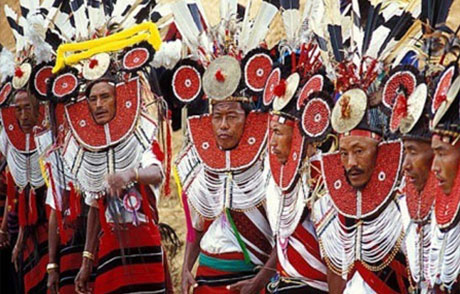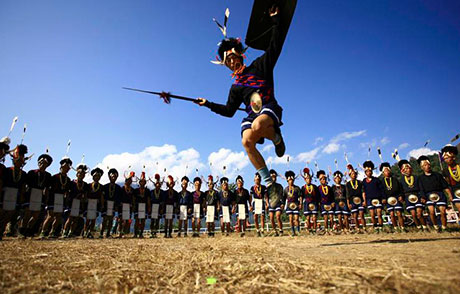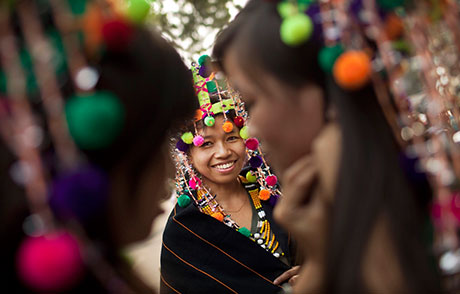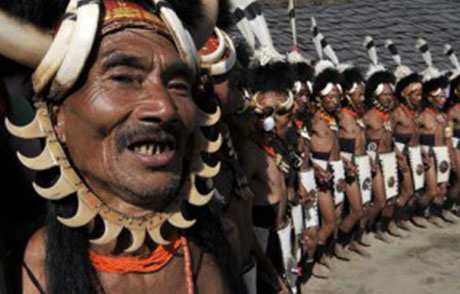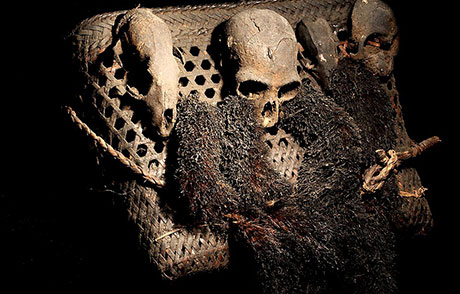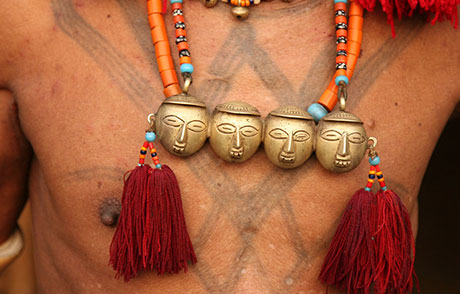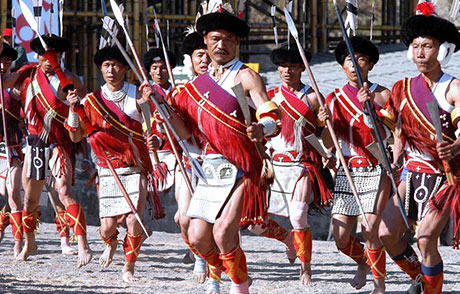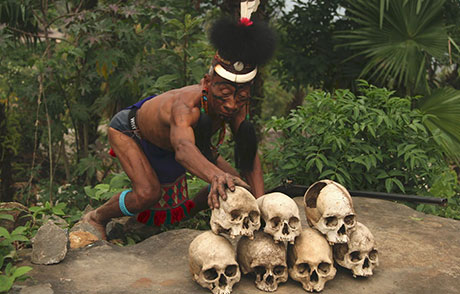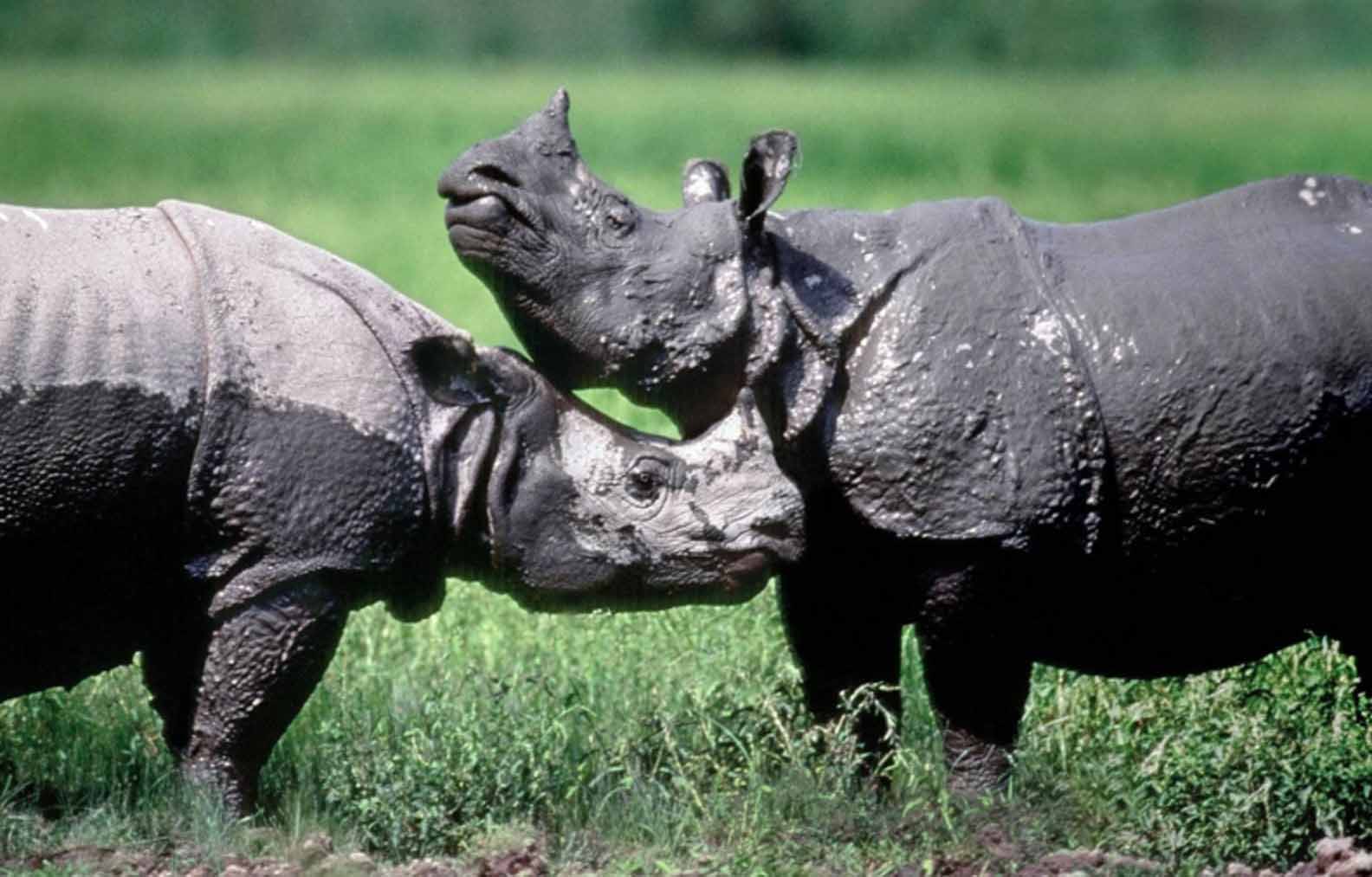Off the Beaten Track
Off the Beaten Track – The Subcontinent Stops Here
New Delhi – Assam – Nagaland – Darjeeling – Sikkim – Agra – Delhi
October to December and March to April
Parts of this tour have only recently been de-restricted to foreigners. Be among the first to enjoy a truly fascinating voyage into the heart of India’s North-East. Here you will discover the stunning mountain peaks and rolling green fields that make this region so enchanting. Whether it’s the scenery, the Buddhist monasteries or Hindu temples, the unique culture, Darjeeling’s museum of Everest conquest – the North-East abounds with delights for the discerning and intrepid traveler. The tour includes a visit to the Kaziranga National Park and the state of Nagaland where head hunting was still practiced into this millennium!
Highlights
- Discover an untouched world of Naga tribespeople and one horned rhinos
- Visit the wettest place in the world, the Tibetan Book of the Dead and butterfly central
- Planes, trains and automobiles. Oh, and rickshaws and tuk tuks too!
- Great hotels and jungle lodges
Itinerary
Itinerary
Day 1 Delhi
You are met at the airport in Delhi and transferred to your hotel. The day includes a sightseeing tour of British-built capital of New Delhi, the garden city built in 1911. We also visit the Humayun’s Tomb built in mid 16 th century, the Rashtrapati Bhawan (the president’s house), the stone arch of triumph – India Gate, and the Birla Mandir (Lakshmi Narayan temple).
Days 2 - 4 Kaziranga National Park
In the early hours of the morning, we fly to Guwahati (Assam). On arrival, we proceed by road to Kaziranga National Park, famous as the last major home of the one-horned Rhinoceros. Spread over a sprawling area of 430 sq kms, Kaziranga Park is the oldest national park in Assam. The tall elephant grass and rugged reeds, marshes and shallow pools are home to many other animals, including Elephants, Indian Bison, Sambar, Sloth Bear, Tiger, Leopard, Capped Langur, Hoolock Gibbon, Jackal, Egret, Heron Fishing Eagle and many more. We stay in a Jungle Lodge and visit the park on elephant back as well as by jeep safari.
Days 5 - 6 Kohima
Our journey today takes us by road to Kohima , the capital of Nagaland. Kohima attracted world attention during World War II because it was here that the Japanese advance was halted by the British and Indian forces. We visit the World War II Cemetery – a reminder of this history. We also visit the old Kohima village of Bara Basti which has a traditional Naga ceremonial gateway carved with motifs of guns, warriors and symbols of prosperity. We also visit the market where we see the tribal women who come to buy and sell their produce. From Kohima we take an excursion to Phek, a small town inhabited by Sema and Aou tribes, and beautifully surrounded by hills.
Days 7 - 8 Jorhat
Today, we carry on by road to Jorhat, the gateway to Upper Assam. It is one of Assam’s major tea centers (festival in November). It is also an important center for Assamese Vaishnava (hindu) culture and is famous for its monasteries, called ‘Satras.’ The institution of the satra was founded in 15 th century by the Assamese poet, composer and philosopher Sankardeva. From Jorhat we visit Majuli Island, the largest river island in the world. At the Majuli satras, Vishnu is worshipped through dance dramas re-enacting the stories of the ‘Mahabharata’, and with music and poetry.
Days 9 - 11 Shillong
Our onward journey takes us to Shillong. Surrounded by pine trees and veiled in clouds, one can quite understand how it reminded the British so strongly of home. They built a championship golf course (the world’s wettest), and a polo ground, and soon the surrounded hills were dotted with neat Victorian bungalows and churches. In Shillong we visit the Ward Lake which was the focus of the European settlement. The Botanical Garden and State Museum adjoin it. We also visit the Butterfly Museum, where butterflies are bred and supplied to conservation organizations around the world. An afternoon excursion to the Shillong Peak (1960m) – the ‘abode of gods’, from which the city gets its name, offers excellent views. We also take an excursion to the old administrative headquarters of the Khasis, picturesque Cherrapunji (58km) set among orange groves. It once held the record as the wettest place on earth with annual rainfall recorded at 23,000mm. The town has some traditional Khasi homes built with carved walls and a sturdy arching roof to withstand the storms. Here, we have superb views from the escarpment over Bangladesh. Finally, we visit the Nohkalikai Falls, reputedly the world’s fourth highest.
Day 12 Guwahati
Today, we return to Guwahati by road. In the afternoon, we take an excursion to Sualkuchi by motor-boat. The Sualkuchi village is famous for silk production. Every household is involved with weaving of ‘muga’, ‘endi’ or ‘tassar’ silk. Before leaving, we also visit Guwahati’s best-known temple – the Kamakhya Temple on Nilachal Hill. It is the center for Shakti worship and Tantric Hinduism because it’s believed that when Siva sorrowfully carried away the corpse of his first wife, Shakti, her body disintegrated and her ‘yoni’ (vagina) fell here. Rebuilt in 1665, after being destroyed by Muslim invaders, the temple’s origins are much older than that. It was probably an ancient Khasi sacrificial site, and daily goat sacrifices are still very much part of worship here. It attracts pilgrims from all over India. We also visit the 10 th century Janardhan Temple in the heart of the city. The Buddha image here uniquely blends Hindu and Buddhist features.
Days 13 - 14 Darjeeling
We transfer to the airport to board our flight to Bagdogra where we continue by road. We journey through tea estates and lush green fields to Darjeeling. Although famous for its tea, Darjeeling is also known for its cool climate and majestic mountain views. Originally part of the kingdom of Sikkim, Darjeeling became so popular with the British that the King was forced to cede the area to colonial India. From Darjeeling we take a day trip to Tiger Hill (2590m) for a breathtaking view (weather permitting) of the sunrise on Kangchendzonga (8598m), the world’s third highest mountain and India’s tallest. Mt. Everest (8846m) 225km away, is also visible on a clear day. We also visit the region’s most famous monastery, Yiga Choling Ghoom, founded in 1850. The Ghoom Monastery’s large shrine contains a golden statue of the Maitreya Buddha (the future Buddha). We also visit the Bhutia Basti Gompa. This colorful monastery was originally a branch of the Nyingmapa sect’s Phodong Monastery in Sikkim, but it was transferred to Darjeeling in 1879. There’s a library of Buddhist texts upstairs which houses the original copy of the ‘Tibetan Book of the Dead’. As all mountain climbers know, Darjeeling was the home of the late Tenzing Norgay and has, since 1954 housed the Himalayan Mountaineering Institute where he trained a generation of mountaineers. We visit the institute where we can see some of the relics from the first conquest of Mt. Everest by Hillary and Norgay. We also visit the Tibetan Refugee Centre established in 1959, which includes a home for the aged, an orphanage, school, clinic/hospital, gompa and craft workshops that produce carpets, woodcarving, leatherwork and wool items.
Days 15 - 16 Gangtok
Today, we proceed on our journey by road to Sikkim’s capital, Gangtok (1547m). Gangtok is dwarfed both in altitude and scenic beauty by its spectacular surroundings. We take an excursion to the early 18 th century Kagyupa monastery of Phodong. It is a pleasant walk up to the gompa where friendly monks show you around. A further hike of 2km takes us to the Labrang monastery of the Nyingmapa sect. We also visit the Namgyal Institute of Tibetology – established in 1958 and built in traditional style, this unique institute promotes research into Mahayana Buddhism and the language and traditions of Tibet. The library maintains a large and important Buddhist collection with many fine ‘thangkas’, icons and art treasures on display. We also visit the Orchid Sanctuaries surrounding the institute, where we can see many of the 454 species of orchid found in Sikkim.
Day 17 Kalimpong
We leave by road to Kalimpong (1250m). En route we visit the Rumtek Monastery (1550m). This huge and wealthy monastery is the seat of the Gyalwa Karmapa, the head of the Kagyupa order of Tibetan Buddhism. Set in beautiful wooded mountain scenery, Kalimpong, a remote hill-station, has been a meeting point on the trade route to Tibet, Bhutan and Nepal. The original name meant the stronghold (‘pong’) of the king’s minister (‘kalim’). Kalimpong is a bustling and rapidly expanding bazaar town.
Days 18 - 19 Delhi (including Agra)
We make our way back down to Bagdogra, from where we fly back to Delhi. This time we visit Old Delhi , built by the Mughal Emperor Shah Jahan in the first half of the 17 th century. From the Red Fort, we take a bicycle rickshaw ride through the narrow lanes, to the Jama Masjid, the largest mosque in India and the last great architectural work of Shah Jahan. We also visit the Raj Ghat on the banks of the Yamuna, a simple square platform of black marble which marks the spot where Mahatma Gandhi was cremated. From Delhi, we take a day-trip to Agra, to visit the Taj Mahal and Agra Fort. The Taj Mahal has been described as the most extravagant monument ever built for love. It was constructed by Emperor Shah Jahan in memory of his second wife, Mumtaz Mahal, whose death in childbirth in 1631 left the emperor so heartbroken that his hair is said to have turned grey overnight. We also visit the massive red sandstone Agra Fort (Red Fort) on the bank of the Yamuna river.
Day 20 Delhi
The tour ends today with breakfast and transfer to the airport for your international departure flight.

